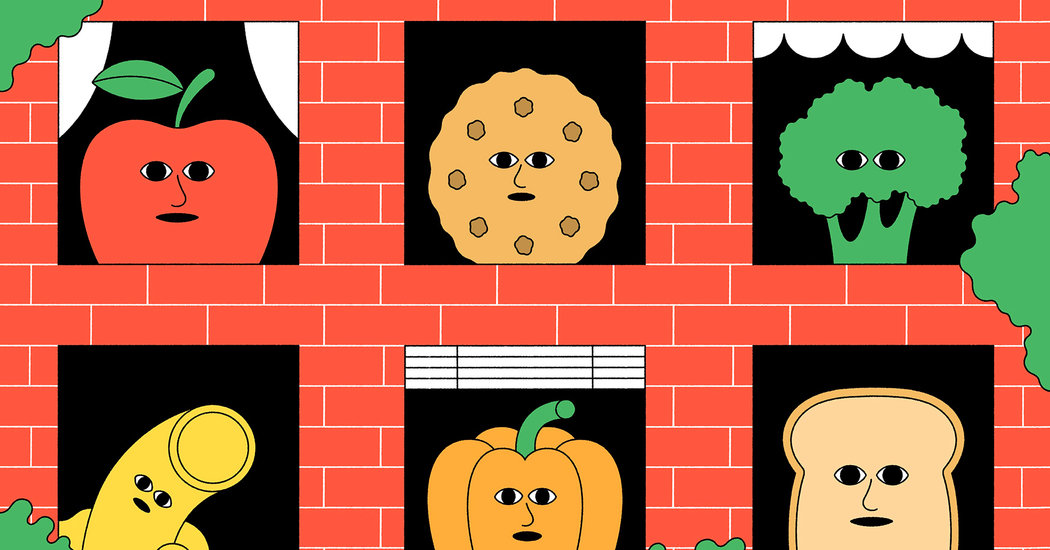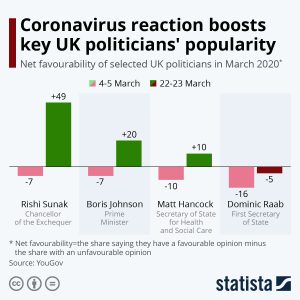As coronavirus continues to spread across the globe, we’re working to answer the questions on many parents’ minds. This is a fast-moving situation, so some information may be outdated. For the latest updates, read The New York Times’s live coronavirus coverage here.
As we slog through another week of self-isolation, quarantine or even total lockdown, parents stuck at home with young children are grappling with how to keep everyone well-fed … meal after meal, snack after snack, day after day. I’ve rounded up some common questions and sought answers from two dietitians, a pediatrician and an anti-hunger advocate.
Is it OK for my kids to eat nothing but mac and cheese right now?
Emphatically, yes. “There is something very reassuring about any shred of normalcy in a crisis, and that includes mac and cheese,” said Evelyn Tribole, M.S., R.D.N., a registered dietitian and co-author of “Intuitive Eating.” “We all need comfort food right now.” You may find yourself wanting to cook and bake more as a way to stay grounded. “Smelling delicious food keeps us in the present moment,” Tribole said. “It’s also a great way to build some fond food memories that your children will have of this time.”
It’s possible you’ll feel too stressed out to cook much and find yourself depending on easy pantry staples like your kids’ favorite crackers, cookies and boxed mac and cheese. This is also valid. Especially in these first few weeks of settling into isolation, give yourself permission to take some shortcuts and make dinner the thing you don’t have to stress about as much. “Parenting and self-care need to look different right now and we have to be OK with lowering some of the bars,” said Anna Sweeney, M.S., R.D., a registered dietitian who specializes in the treatment of eating disorders, in private practice in Concord, Mass.
It is important to reinforce normalcy, so sitting down together at the table to share meals, if you typically do that, will be helpful. If you can, put some fresh fruit or sliced cucumbers on the table, or stir a bag of frozen peas into the mac and cheese, so you’re continuing to expose kids to other food groups. But don’t stress if they don’t touch the produce. Remember that they are still deriving the main benefit of family meals — connection with loved ones — whether they’re eating a homemade salad or store-bought cookies for dinner.
Nutrition-wise, you can trust that a few weeks of less-balanced eating won’t cause long-term damage. “Children will be OK eating less variety during this unprecedented situation,” said Katja Rowell, M.D., a pediatrician who specializes in feeding issues, noting that many processed foods, like cereals and pasta, are fortified with micronutrients. “Vegetables are great if your family has access and enjoys them, but health isn’t all about vegetables. Being able to take a walk together, cuddle and read a book, or laugh over a silly movie and a bowl of popcorn are all great health-promoting activities right now.”
But if your child’s current disdain for vegetables makes you anxious, trust that the kids who gleefully ate bowl after bowl of mac and cheese last week will fall out of love with it in the coming days or weeks, as I outlined in a column about the “division of responsibility in feeding” approach to family dining. “This will be a good lesson in habituation,” Tribole said. “Kids who are allowed to decide how much of a food they want to eat really will ultimately get tired of their favorites.”
Give yourself permission to enjoy all the carbs, too, if you’re so inclined. “People fear using food to cope, but it’s a beautifully orchestrated coping mechanism,” Sweeney said. But if you’re struggling with anxiety or depression and feel like food is your only escape, or find yourself frequently eating to numb your emotions, reach out to friends, family or a mental health professional for support (many are offering telehealth services right now).
Going easy on yourself means deciding not to get caught up in worrying about the #quarantinefifteen or other diet culture fears circulating on social media right now. A global pandemic is not the time to start a crash diet or otherwise pressure yourself to control your weight. Instead, try to reframe any anxiety about specific foods in your home as gratitude that you have enough to eat.
What should I do if we run out of my picky eater’s safe foods?
The good news: We are not running out of food, according to those managing the supply chain. Still grocery stores and suppliers are struggling to keep up with demand right now, causing many of us to see some empty shelves when we shop. And we’re all trying to shop less frequently (and take precautions when we do go), which may mean temporary shortages at home as well. If you do run out of your child’s favorite foods, you can reassure him that they are not gone forever and let him know when you’ll be restocking. But toddlers especially tend to be fuzzy on the concept of time, so have compassion for their feelings of disappointment and frustration. And your own: “Fear of food scarcity is a very, very, very human response,” Sweeney said. “Seeing empty shelves at the supermarket is psychologically jarring.”
Giving kids more choices and control around what they can eat may help mitigate the stress of running out of their favorites. Offer two options for snack time and let them decide, Dr. Rowell suggested. Ask older kids to help you write up or decorate a meal plan for the week and be in charge of picking which fruit or side dish goes best with your main meal. Many picky eaters enjoy getting more involved in cooking, and may surprise you by tasting new foods in the process, though they may still decline to touch it once their dinner reaches the table.
If you have a child with food allergies, medical dietary restrictions or an extremely limited palate, it’s important to stock up on their safe foods when you can. Ask your grocer when the store is expecting a shipment, order online or reach out to neighborhood friends who may have some to share. (Online, the Mealtime Hostage Facebook Group is a great place to brainstorm and share resources with fellow parents of limited eaters.) Stock up on yogurt tubes, baby food pouches or electrolyte drinks if your child will eat those and you’re worried about simply getting enough calories in.
“Assess your child’s anxiety and let that be your guide,” Dr. Rowell said. Refrain from pushing your child to take bites, which will only increase her worry. And try to maintain a meal and snack schedule both because kids thrive on routine and because this will give them time to get hungry for meals. But get creative about what that looks like for your cautious eaters; you may need to ease any anxiety around unfamiliar foods by letting them eat while reading a book or watching a screen.
If your family is grazing without a clear schedule on some days, don’t stress about that either. “Being a ‘responsive’ parent and feeder means looking at each situation and going with what works,” Dr. Rowell said. “If you’re crying in the bathroom while your kids eat Goldfish in front of ‘Dora,’ but that keeps you sane right now, go for it.”
How can we help food-insecure families?
This is the true food fear of the pandemic: How many families will struggle to have enough to eat, period? More than 11 percent of American households qualify as “food insecure,” according to the United States Department of Agriculture’s 2019 report, including 2.7 million households with children. Experts don’t yet know how that number will climb in response to coronavirus, but it’s safe to say it will, said Rachel Cahill, an anti-hunger advocate who works with state and national organizations in Ohio. “We’re already seeing lay-offs in many industries with low-wage workers, many of whom may not qualify for unemployment benefits.”
Although the Families First Coronavirus Response Bill includes certain protections for those receiving benefits from the government’s Supplemental Nutrition Assistance Program (SNAP, formerly known as food stamps), the risks of food insecurity are nevertheless magnified for families who were already struggling. “Low-income families certainly cannot stockpile food,” Cahill said. “Even if we’re keeping their SNAP benefits and making sure schools distribute free breakfasts and lunches, that still won’t get them to a place of having excess.”
Emergency food banks will work to fill the gap short-term for most families. (Enter your zip code at feedingamerica.org to find one near you.) If you’re able, consider volunteering with your local food bank or school district distributing breakfasts and lunches.
“Most food bank volunteers are senior citizens who now have to stay home,” Cahill said. “There is a desperate need for young, healthy volunteers.”
Food banks are putting measures in place to reduce risk to such helpers, such as contactless drop-offs. But you can also help by donating funds, shelf-stable foods or household supplies. (Ask your local food bank what they need most right now.)
Virginia Sole-Smith is the author of “The Eating Instinct: Food Culture, Body Image and Guilt in America” and co-host of the Comfort Food Podcast.



















